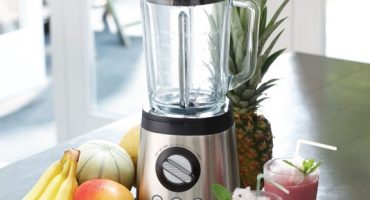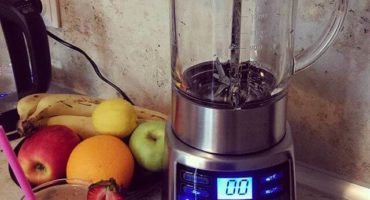At first glance, a blender and mixer practically do not resemble each other. At the same time, very often choosing the right type of this small household appliance for the home, people get lost, trying to answer the question for themselves, what is still a mixer or a blender and what are their main differences. In fact, the answer is obvious, since these devices have completely different purposes and the best in this case will be the one whose help will be more required when cooking your favorite dishes in the kitchen.
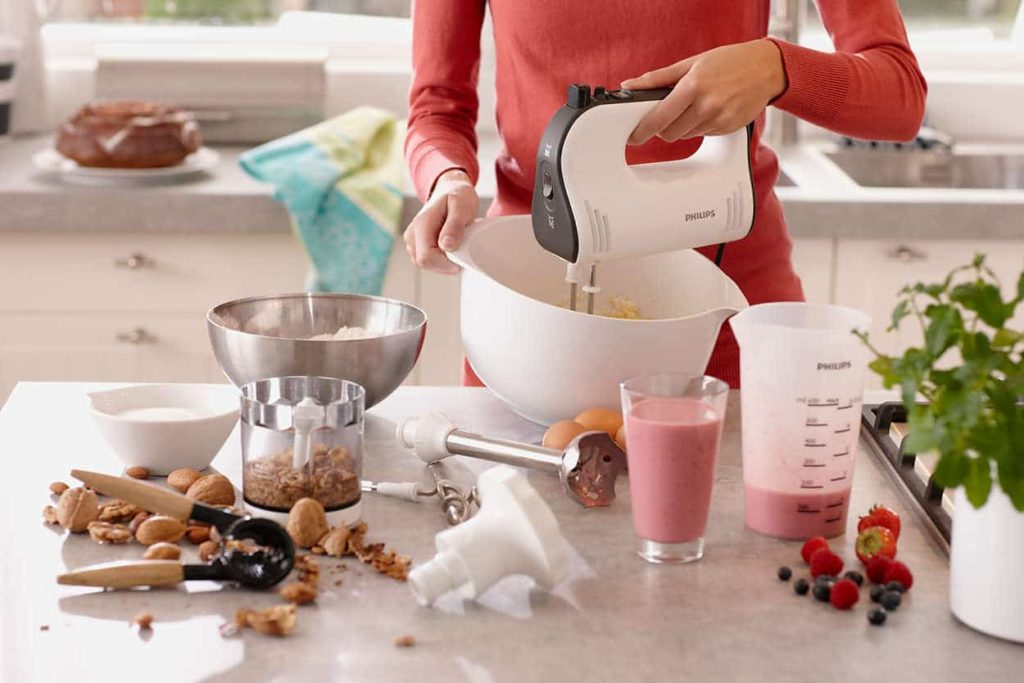
The main purpose is the main difference
The main difference between a mixer and a blender
The main purpose of the mixer is to mix and whisk products. For this, a pair of beater made of durable solid and wear-resistant metal is used as the main working tool in this device. With the help of them, you can simply and quickly turn egg whites or thick cream into airy foam. To mix denser mixtures, two spiral elements with a hook from below are used as nozzles. Using them, you can knead the dough qualitatively, without fear that the motor will not withstand such a load. At the same time, it is impossible to grind hard products such as sugar, coffee, nuts or ice with a whisk or a spiral nozzle with a hook.

The main nozzles of the mixer
The main purpose of the blender is to grind and mix products, and this expresses their most basic difference. A sharp knife is used as the main working tool. In a stationary device, it is located in the lower part of the bowl, and in the submersible device, on the edge of the standard nozzle in the form of a “foot” in a special dome-shaped recess. At the same time, sharp blades of strong knives will surely grind not only meat, vegetables and fruits, but also frozen products and even ice cubes. Therefore, it is very often used to grind and mix various ingredients in order to obtain soft drinks by means of adding to the composition of "ice". But it’s worth noting that when using thick cream for whipping a standard blender nozzle, using it to prepare such an airy and light mixture as using a whisk will not work.
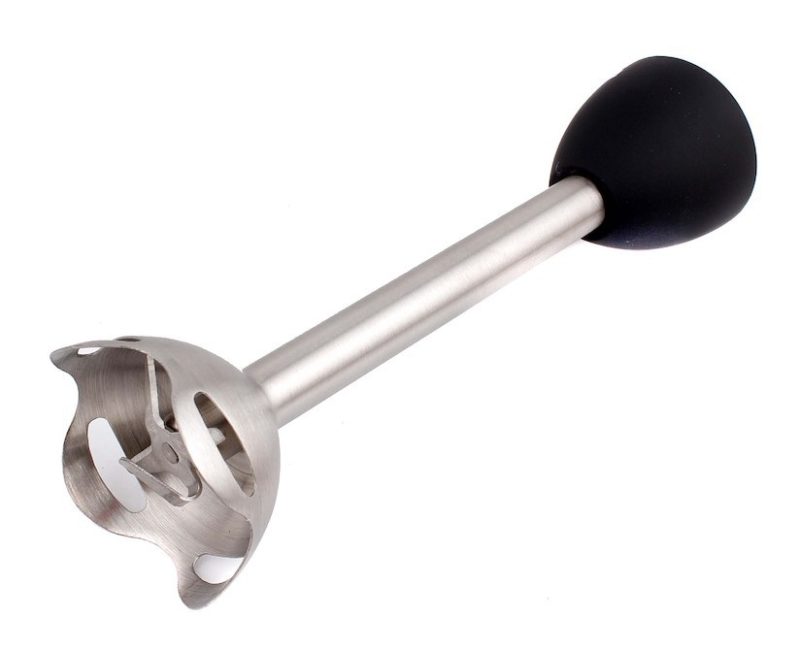
Submersible blender main nozzle
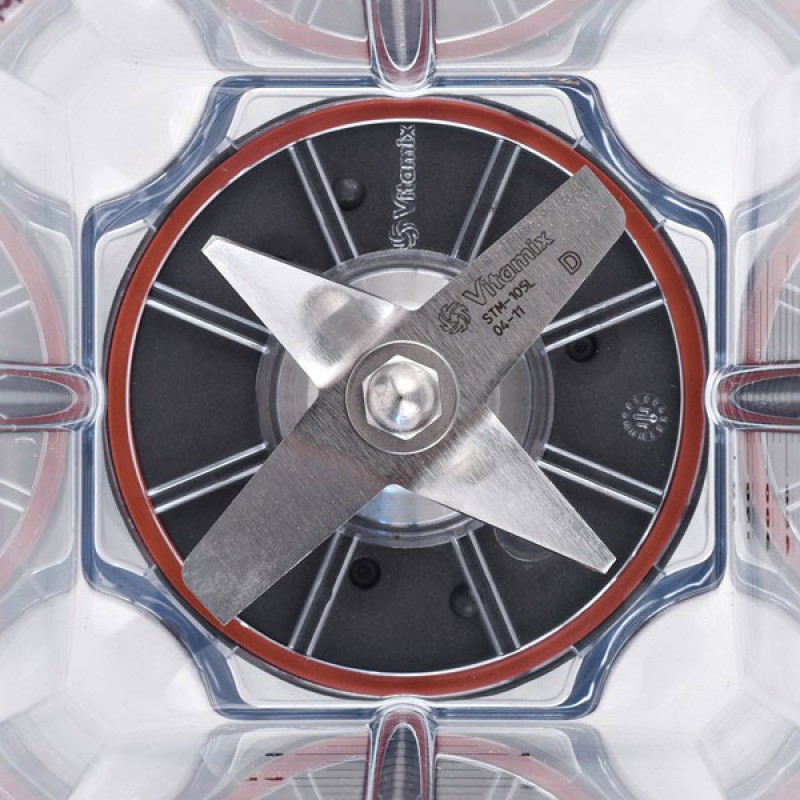
Knives in a stationary blender are located at the bottom of the bowl
Advantages and disadvantages of the mixer and blender
A clear advantage of the hand blender is its versatility. With its help, you can quickly grind and mix all the ingredients at the moment when cooking dishes such as mashed soups. In this case, the liquid will not be sprayed onto adjacent objects and surfaces. If the set of such a device includes additional interchangeable nozzles, then it can be confidently called a mini-combine, as it will allow you to very quickly and efficiently chop, chop, or chop various types of products. The power of blenders reaches 1000 watts, which provides a very high speed of rotation of the knife during operation. This is especially necessary for the complete grinding of solid products. Power of a conventional hand mixer can reach a maximum of 400-500 W, stationary - 700 W, which indicates that the speed of rotation of the nozzles of this device is almost 2 times less. And this is the second most important answer to the question of how the blender differs from the mixer.The low speed of rotation of the nozzles of the mixer, together with their shape, is their significant advantage, since it allows the mixture to be saturated with air during whipping, making it light and airy.

"Leg" will allow you to quickly prepare a soup puree
Today, on the shelves of shops you can find both blenders with an additional nozzle in the form of a whisk, and mixers with the “foot” included in the kit and a grinding bowl. This design significantly increases the functionality of both devices, but at the same time complicates the search for the answer to the question, what is the difference blender from the mixer, and which of these two devices to choose. But nevertheless, in the quality and speed of the performance of certain operations in the end, they will differ significantly. So using a submerged “leg” on a whipping device, it will not be possible to make soup puree as fast as it can be done with a blender, while mixing thick pastry with the whisk included in the kit and made of less durable material will also be problematic .
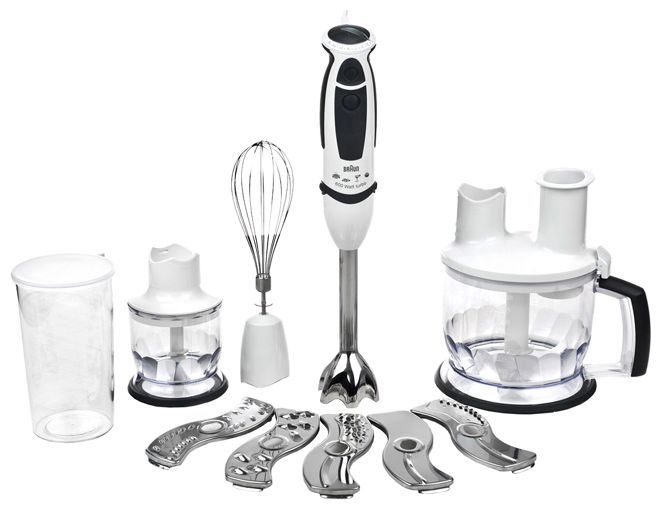
Multifunction blender
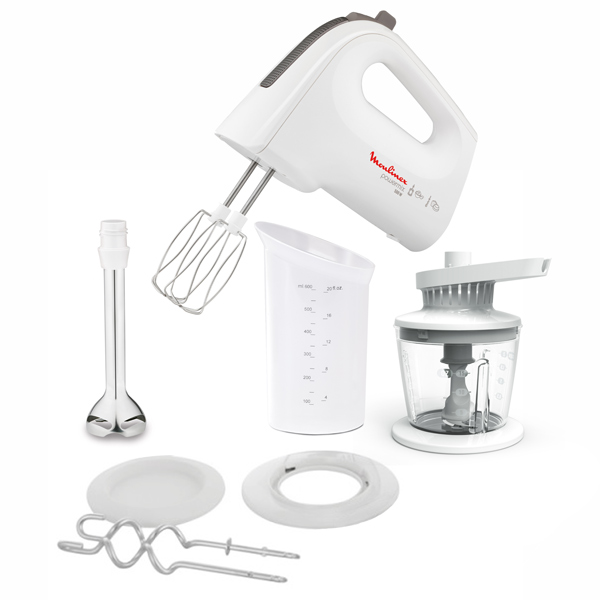
Multifunction mixer
What is the best mixer or blender
Thus, we can conclude that the main difference between such devices as a mixer and a blender in their standard design is their purpose. So with the often arising need for kneading dough or preparing an air mass from eggs or cream, as well as compositions with a homogeneous consistency made of liquid products, the mixer will be more appropriate. In the same case, if sauces, cocktails or smoothies are prepared by grinding and mixing dense, including sufficiently solid products, then you can not do without using a blender. Ideally, in the kitchen you must have two devices at once, each of which will be used strictly for its intended purpose, and not look for the answer to the question of whether the mixer can replace the blender. In this case, not only the result obtained during the cooking process will be better and tastier, but also a long service life of each of the devices will be ensured.
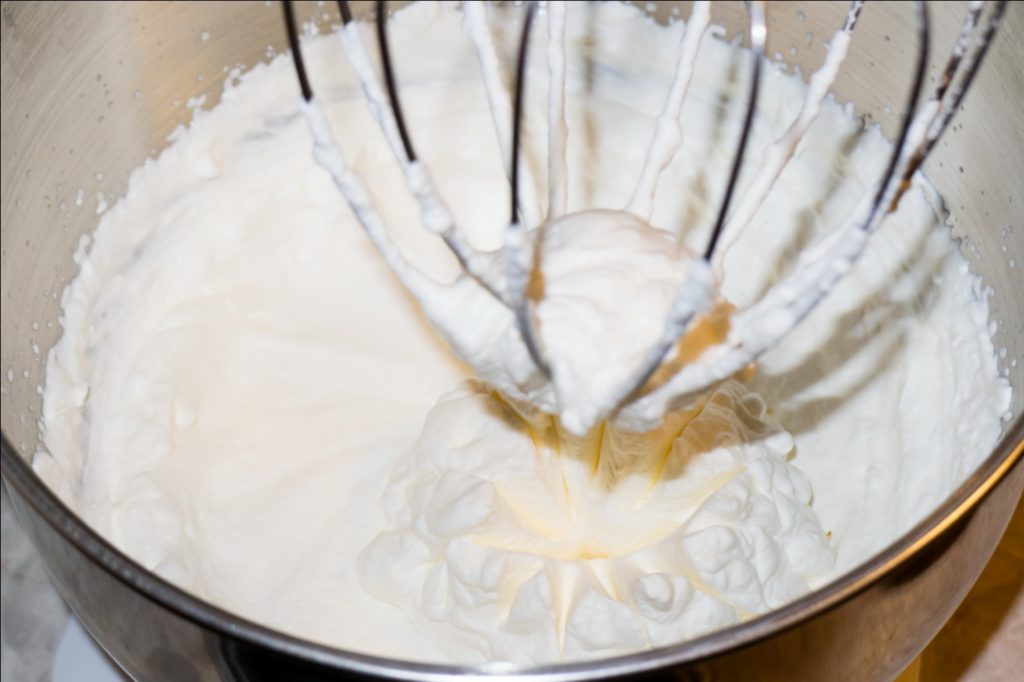
Beating is one of the main functions of any mixer.
If we consider the purchase of a mixer or a blender from the point of view of a more acceptable cost, then in this case they are almost equal. So, for example, today the Braun MultiMix 3 Hand mixer HM3135, with a power of 500 W, which, in addition to two types of beater, includes a small bowl for chopping products and a “foot”, costs about 5,500 rubles. And the Braun MQ3045WH Aperitive blender, with a power of 700 W, which includes, in addition to the standard nozzle, a small and a large grinding bowl, a whisk and a measuring cup costs about 6,000 rubles. The price range of this company, which is distinguished by its quality and reliability, is less wide for hand mixers and ranges from 2500 to 6500 rubles, while the cost of submersible blenders is from 2500 to 13000 rubles, and stationary blenders to 20,000 rubles.
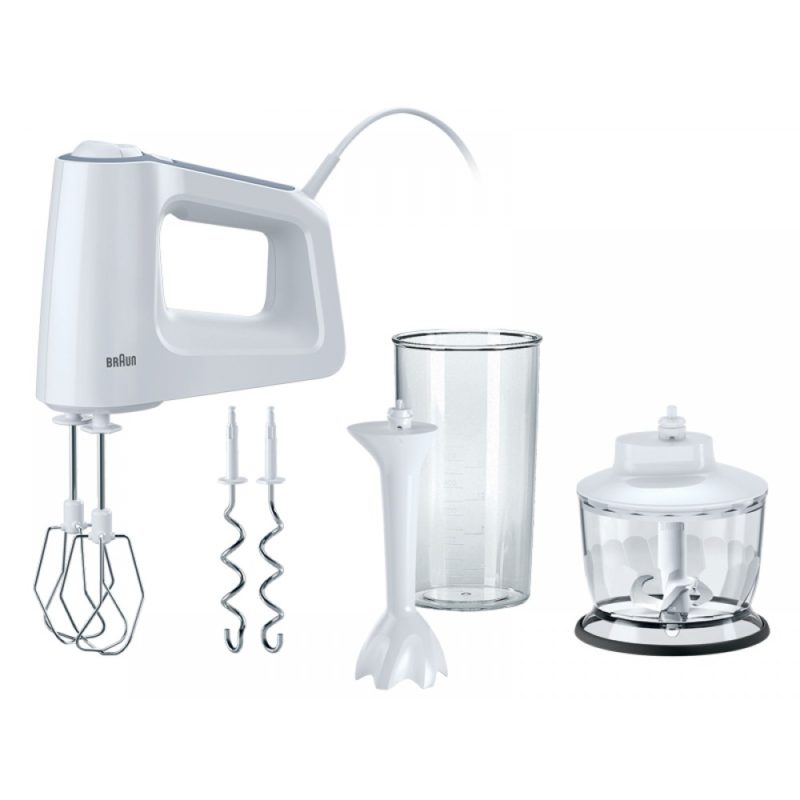
Braun MultiMix 3 Hand mixer HM3135
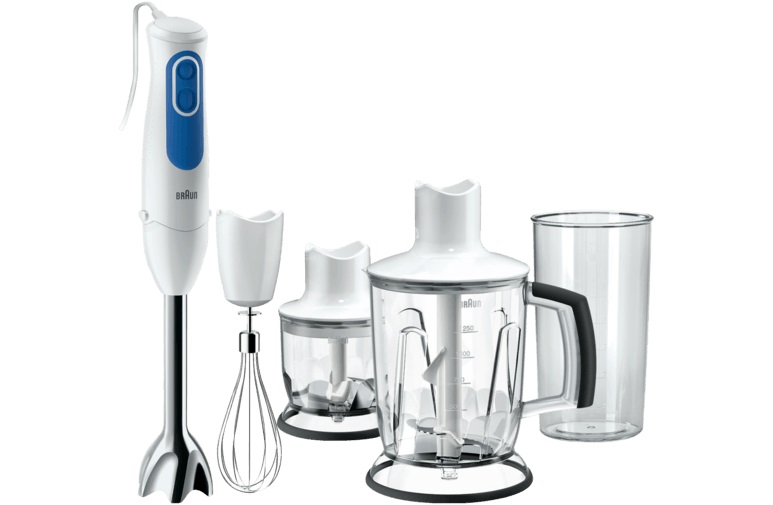
Braun MQ3045WH Aperitive

